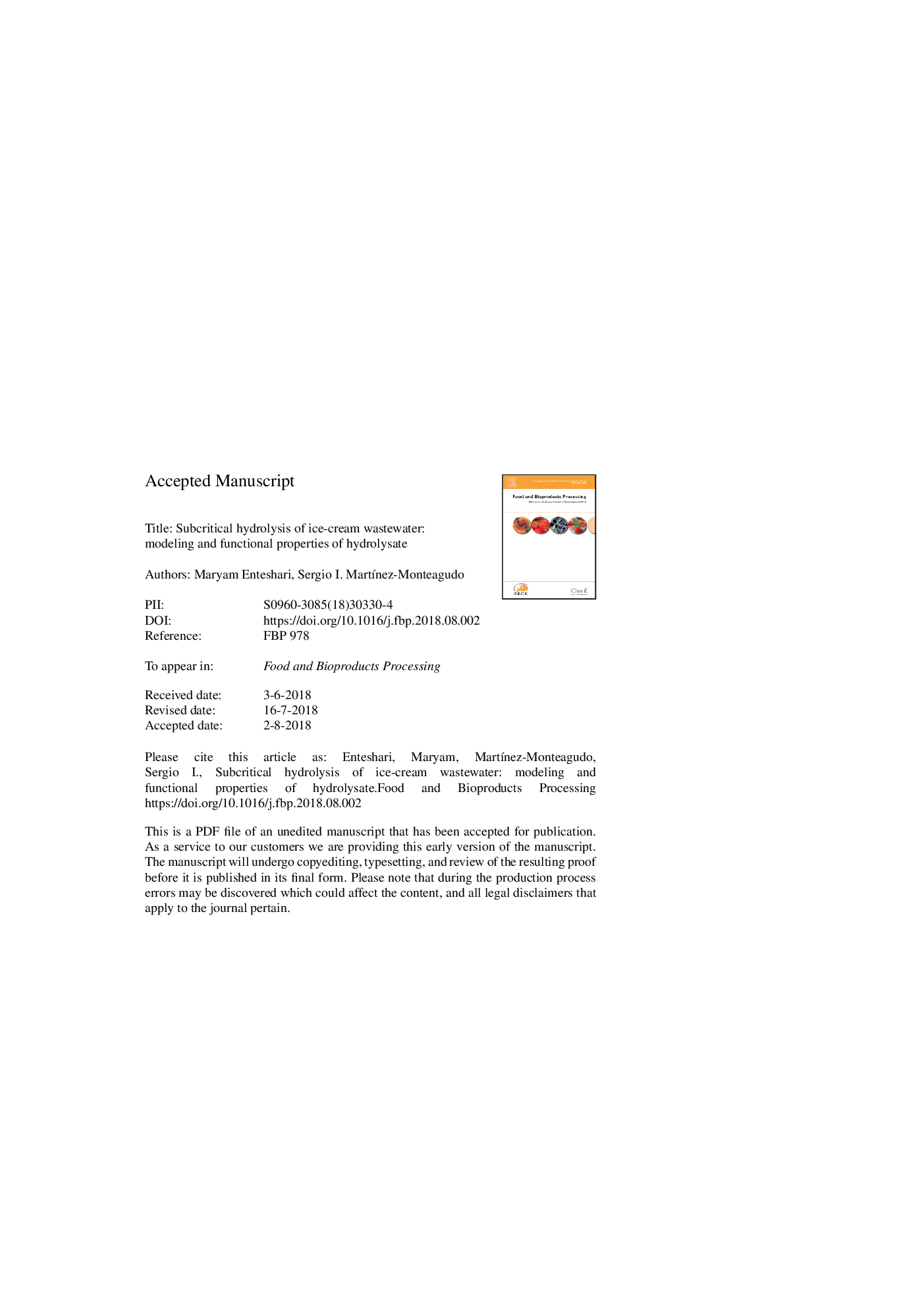| Article ID | Journal | Published Year | Pages | File Type |
|---|---|---|---|---|
| 6488317 | Food and Bioproducts Processing | 2018 | 37 Pages |
Abstract
The hydrolysis kinetics of ice-cream wastewater was studied under subcritical conditions (130-230 °C and 20-60 bar) in a continuous stirred-tank reactor. The kinetic was monitored by measuring the degree of hydrolysis (DH, %) at different time intervals (up to 240 min). Samples of ice-cream wastewater were collected from the university dairy plant after a typical clean-in-place protocol. Overall, the reaction time and temperature significantly increased the DH, reaching a maximum value of 40.99 ± 0.81, 34.44 ± 0.47, 20.61 ± 0.42, and 5.74 ± 0.36% after 200-240 min at 130, 170, 200 and 230 °C, respectively. The experimental data were modeled using the Weibull distribution model showing a satisfactory correlation between experimental data and predicted values (R2 = 0.971). The apparent activation energy for subcritical hydrolysis was 37.53 ± 5.21 kJ molâ1. After 240 min of reaction, the hydrolyzates were recovered, and their antiradical ability was measured through free radical scavenging (2,2-diphenyl-1-picrylhydrazyl) method. Additionally, the angiotensin converting enzyme (ACE)-inhibitory ability was determined. The inhibition of a free radical was found to increase linearly with the DH (R2 = 0.991). The hydrolysate recovered at 230 °C showed the highest ACE-inhibitory ability (98.0 ± 1.6%). The study outcomes present an opportunity for utilizing subcritical hydrolysis to convert wastewater into valuable materials.
Keywords
Related Topics
Physical Sciences and Engineering
Chemical Engineering
Bioengineering
Authors
Maryam Enteshari, Sergio I. MartÃnez-Monteagudo,
